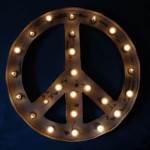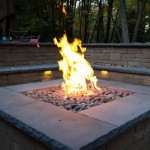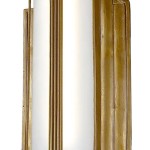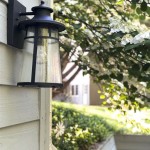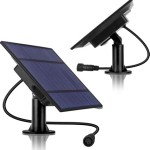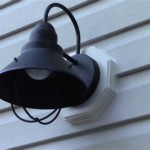Best Lighting for Outdoor Photos
Achieving exceptional outdoor photos hinges on understanding and harnessing the power of natural light. This element can make or break a photograph, shaping shadows, defining textures, and influencing overall mood. Whether capturing landscapes, portraits, or wildlife, mastering the art of outdoor lighting is paramount. This article delves into the best lighting conditions and techniques for stunning outdoor photography.
Golden Hour: The Magic of Soft Light
Often dubbed the "golden hour," the period shortly after sunrise and before sunset offers a unique and highly sought-after lighting effect. During these times, the sun hangs low in the sky, casting long shadows and bathing the surroundings in a warm, diffused light. This soft, golden glow creates a romantic and ethereal ambiance, ideal for portraits, landscapes, and even macro photography. The diffused light minimizes harsh shadows, resulting in softer, more flattering tones on subjects. Additionally, the warm hues add a touch of vibrancy and depth to images.
The golden hour's soft light works wonders for revealing textures in surfaces, such as the bark of a tree or the wrinkles on a face. It also creates a sense of depth and dimension, particularly in landscapes. The long shadows cast by the low sun enhance the three-dimensionality of the scene and heighten the sense of perspective. Photographers often utilize backlighting during the golden hour, positioning the sun behind their subject to create a halo effect and emphasize their outline.
Overcast Days: The Power of Diffused Light
While the golden hour is a favorite among photographers for its warm glow, overcast days provide a different kind of magic. When the sky is covered in clouds, the light is diffused and evenly scattered, eliminating harsh shadows and creating a soft, flattering light for photography. This diffused light offers numerous advantages, particularly for portraits. It minimizes harsh shadows, ensuring that every feature on the subject's face is illuminated evenly, resulting in a balanced and flattering image.
Overcast days are also ideal for photographing landscapes, as the soft light creates a sense of tranquility and harmony. The lack of harsh shadows allows for a wider dynamic range, capturing intricate details in both highlights and shadows. This makes it easier to capture the overall mood of the scene, emphasizing the subtle nuances of color and texture. The cool tones of overcast light can also be used to evoke a sense of serenity and calmness in landscapes.
Midday Sun: Utilizing Harsh Light
While often considered less desirable for photography, midday sun, when the sun is high in the sky, can be a powerful tool for creating dramatic images. The harsh, direct light creates deep shadows and high contrast, resulting in a high-key look. This style is effective for capturing architectural details, emphasizing textures, and adding a sense of drama to landscapes. The high contrast can be used to create striking silhouettes, isolating the subject against a bright background.
However, working with the midday sun requires careful consideration. The harsh light can cast unflattering shadows on portraits, particularly on faces. To mitigate this, experiment with different angles and use reflectors to fill in shadows and soften the light. The midday sun can also lead to overexposure, so it's important to utilize proper exposure settings and possibly consider using an ND filter to reduce the amount of light entering the lens.
Beyond the Basics: Creative Lighting Techniques
Beyond choosing the optimal time of day for shooting, numerous techniques can be employed to enhance your outdoor photographs. Utilizing reflectors can help bounce light back onto your subject, filling in shadows and creating a softer look. Diffusers, on the other hand, soften the light and reduce harshness. These tools are particularly useful on bright days, or when working with harsh direct sunlight.
Experimenting with different camera angles and perspectives can also significantly impact the quality of your images. Shooting from a high angle can create a sense of grandeur and vastness, while shooting from a low angle can add a dramatic perspective. Utilizing backlighting, positioning the light behind your subject, can create a sense of depth and separation, often resulting in a halo effect around the subject.
Outdoor photography is a dynamic and ever-changing art form. By understanding the nuances of natural light and utilizing creative techniques, photographers can capture stunning images that evoke emotions and captivate viewers. From the soft glow of the golden hour to the power of midday sun, each lighting scenario offers unique opportunities to enhance your photography.

10 Best Outdoor Lighting Ideas Landscape Design Secrets A Piece Of Rainbow

How To Find The Best Lighting For Outdoor Photos Pretty Presets Lightroom

21 Best Outdoor Lighting Ideas Easy Patio

Choose The Best Color Temperature For Your Outdoor Lighting Knowledge Base Super Bright Leds

Best Outdoor Lighting Bulbs Of 2024

28 Backyard Lighting Ideas How To Hang Outdoor String Lights

5 Best Outdoor Solar Lights Of 2024 Reviewed

8 Best Outdoor Deck Lighting Ideas To Transform Your Home

Best Color Temperature For Outdoor Lighting Enhanced
The 7 Best Ways To Light Up Your Backyard Sansbury Electric
